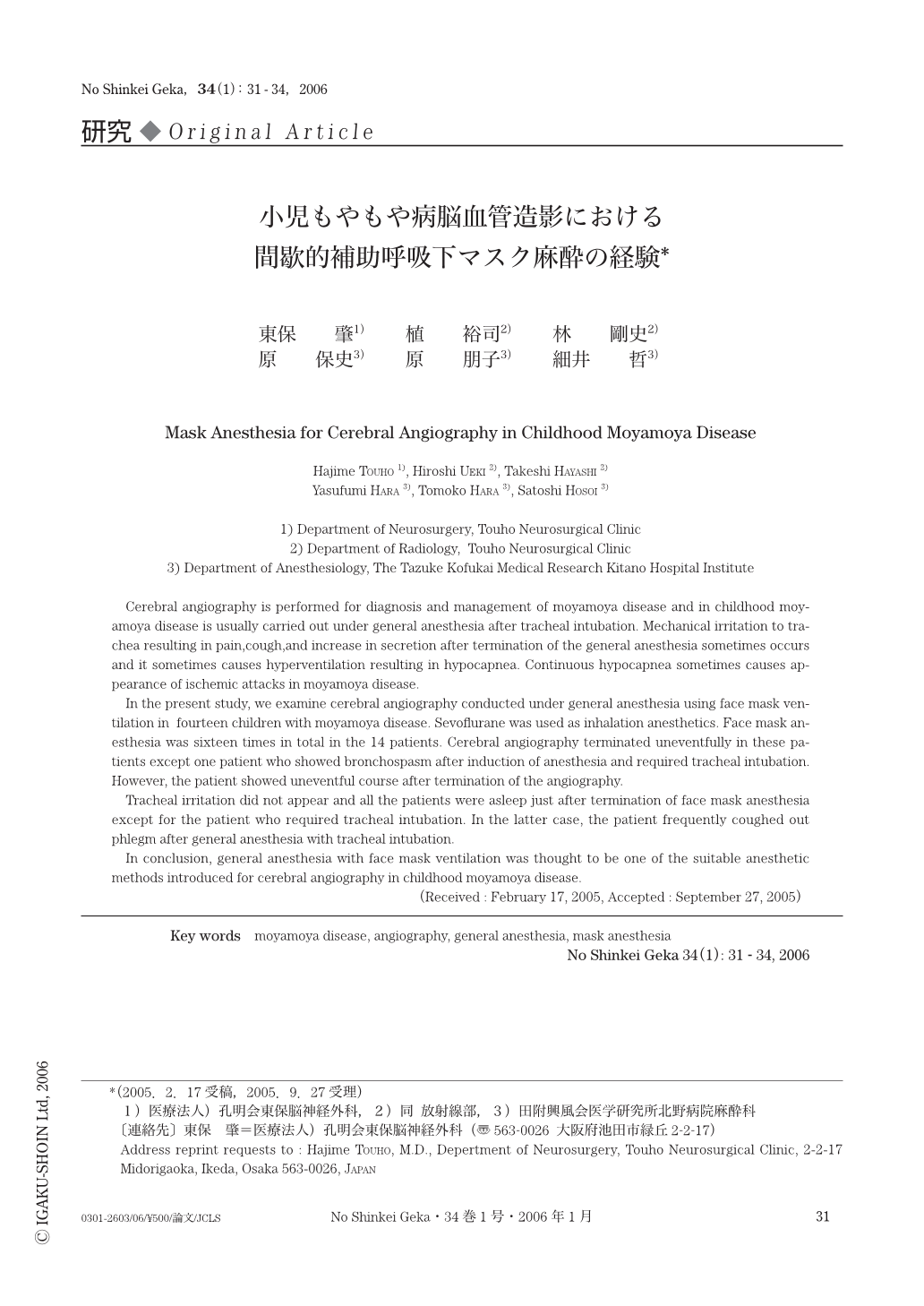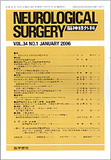Japanese
English
- 有料閲覧
- Abstract 文献概要
- 1ページ目 Look Inside
- 参考文献 Reference
Ⅰ.は じ め に
もやもや病は両側内頸動脈先端部を中心に緩徐な閉塞が起こり,進行すると閉塞が後大脳動脈にまで及ぶ原因不明の脳血管障害である.その代償として,それらの末梢へ側副路が発達してくる1-3,6,7).
通常,本病について正確な診断と的確な治療を決定するためには,脳血管造影が必要となる.小児もやもや病の診断治療において過換気動作となる渧泣は,採血や放射線学的検査,特に無麻酔下の脳血管造影の際に起こり得ることで,渧泣が持続する場合は脳血流量が過度に低下し脳虚血を惹起することがあり得る.小児もやもや病における脳血管造影は,特に低年齢では挿管による全身麻酔下に行われているのが現状である.その際は,全身麻酔だけでなく,抜管後の気道刺激による分泌物増加や咳嗽が低二酸化炭素血症を惹起するリスクとなり得る.
今回,自発ないし間歇的補助呼吸下でのマスク麻酔による呼吸管理の下に脳血管造影を施行し,その有用性につき検討した.
Cerebral angiography is performed for diagnosis and management of moyamoya disease and in childhood moyamoya disease is usually carried out under general anesthesia after tracheal intubation. Mechanical irritation to trachea resulting in pain,cough,and increase in secretion after termination of the general anesthesia sometimes occurs and it sometimes causes hyperventilation resulting in hypocapnea. Continuous hypocapnea sometimes causes appearance of ischemic attacks in moyamoya disease.
In the present study,we examine cerebral angiography conducted under general anesthesia using face mask ventilation in fourteen children with moyamoya disease. Sevoflurane was used as inhalation anesthetics. Face mask anesthesia was sixteen times in total in the 14 patients. Cerebral angiography terminated uneventfully in these patients except one patient who showed bronchospasm after induction of anesthesia and required tracheal intubation. However,the patient showed uneventful course after termination of the angiography.
Tracheal irritation did not appear and all the patients were asleep just after termination of face mask anesthesia except for the patient who required tracheal intubation. In the latter case,the patient frequently coughed out phlegm after general anesthesia with tracheal intubation.
In conclusion,general anesthesia with face mask ventilation was thought to be one of the suitable anesthetic methods introduced for cerebral angiography in childhood moyamoya disease.

Copyright © 2006, Igaku-Shoin Ltd. All rights reserved.


